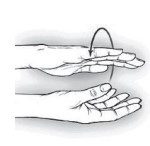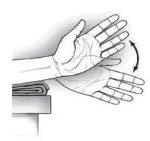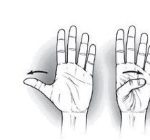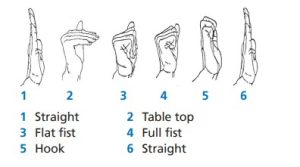Emergency Assessment Unit
Soft Tissue Injury / Sprain Wrist
Patient Information Leaflet
Introduction
This leaflet is for people who have soft tissue injury / wrist sprain. It includes information about the injury, how it is treated and what you need to do when you get back home.
Your injury
A sprain means that you have an injury to some of the soft tissues that support a joint, such as ligaments. You have sprained your wrist joint but you have not broken any bones. This is a common injury.
What are the symptoms?
- Pain straight after an injury
- Swelling
- Bruising
- Difficulty moving the wrist and hand.
How is it treated?
You may be given a removable splint to wear to support the wrist. This should be used for two to six weeks to enable you to use the arm more comfortably whilst the injury heals. You only need to wear the splint when using the arm. You can remove it at rest, at night and when bathing or showering. You can use the arm for light activities immediately and gradually increase how much you are using it as the pain settles down and the symptoms ease off.
These injuries almost always heal well with time and therefore follow up clinic appointments are not usually needed but sometimes you would be given a follow up appointment.
What should I do at home?
- Use over-the-counter pain killers as needed.
- Elevate the injured arm when resting to help reduce swelling.
- You can return to work once you are able to do your normal duties.
How long will it take to heal?
Most sprains heal without any problems in six to twelve weeks. However, it may take six to twelve months for your symptoms to settle completely. These can include pain or discomfort, stiffness, swelling, and decreased strength.
The injury may take longer to heal if you suffer from diabetes or if you smoke.
Exercises
You should try to do these exercises three to four times a day; you can start them immediately.
Repeat these ten times each:
- Wrist extension and flexion: forearm supported on a table, move hand up and down feeling a gentle stretch.

2. Wrist supination and pronation: elbow bent to 90 degrees, rotate your forearm, so that your palm faces up and then down.

3. Wrist ulnar / radial deviation: forearm supported on a table, thumb upwards, move the wrist up and down.

4. Thumb flexion and extension: begin with thumb positioned outward. Move the thumb across the palm and back.

5. Finger and tendon gliding exercises.

What if the pain does not go?
If the pain in not improving in two to three weeks and you have not been given a follow up appointment, please return to Emergency department or see your GP.
Can I find out more?
You can find out more from the following weblink:
NHS Choices: Sprains and strains – NHS
If you have any feedback on this patient information leaflet, please email dgft.patient.information@nhs.net
This leaflet can be made available in large print, audio version and in other languages, please call 0800 073 0510.
Originator: Joanne Taylor Date reviewed: January 2024 Next review due: August 2026 Version: 2 DGH ref: DGH/PIL/02190
